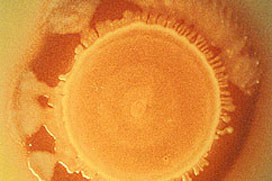New tracking tool for pathogen investigators

US Department of Agriculture (USDA) veterinary medical officer Jean Guard has developed a cost-effective diagnostic tool and dataset for identifying various strains of Salmonella.
The tool, called Intergenic Sequence Ribotyping, or ISR, is helping improve poultry production and human health internationally, because it helps control Salmonella in the field and in consumer poultry products, says USDA.
Guard is with the USDA Agricultural Research Service (ARS) Egg Safety and Quality Research Unit at the Richard B. Russell Research Center in Athens, Georgia.
Salmonella enteric
At present, there are other sequence, or DNA-based, methods for serotyping Salmonella. The traditional method, called Kauffmann–White, or KW, is expensive and identifies a particular serotype in only 80 percent of cases, according to Guard. ISR is being used to serotype strains within a particularly virulent group called Salmonella enterica, which is the type associated with foodborne illness.
Private online accounts for poultry producers
The ISR technology is available to specialised laboratories, producers or other qualified users who sign a proprietary Material Transfer Agreement (MTA). A producer’s lab technician can take a sample from the farm, amplify for Salmonella, and run a PCR assay to isolate the serotype from a single section or piece of DNA. The producer can then submit that sample to a specialised lab – also an MTA holder – that uses the ISR tool for sequencing the Salmonella. The lab then sends the sequence results back to the producer by entering the sequence into a private online account. Producers and diagnostic consultants access their private accounts to download their sequences. They then compare their sequences to those in the ISR-based dataset for a perfect match. The ISR technology provides an earlier warning or detection system for farmers.













